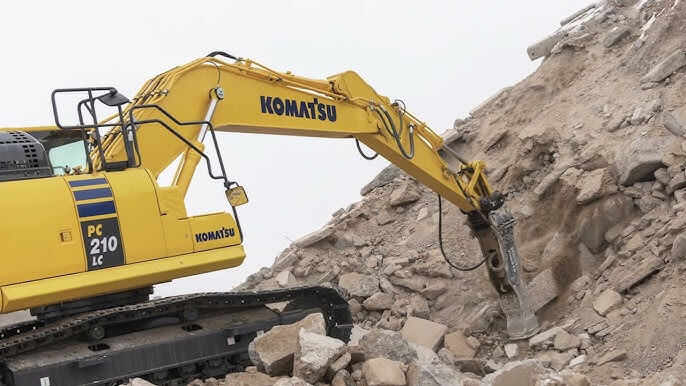Maximizing Excavator Productivity with Hydraulic Breaker Hammers
In the realm of construction and demolition, efficiency is paramount. One of the key tools that enhance operational efficiency is the hydraulic breaker hammer, an attachment that can significantly boost the productivity of excavators. This article explores the various aspects of hydraulic breakers, including their productivity rates, effective operating techniques, and comparisons with other excavation methods.
Understanding Hydraulic Breakers
Hydraulic breakers are specialized tools designed to break through tough materials like concrete and rock. Their power and efficiency make them indispensable in various applications, including airport construction and mining. The productivity of hydraulic breakers can be measured in cubic meters (m³) per hour, reflecting the volume of material an excavator can excavate, move, and place within one working hour.
According to recent studies, the productivity of hydraulic breakers can vary based on several factors, including the type of rock being broken and the operational techniques employed. For instance, it has been noted that the productivity of a hydraulic breaker can be between two to five times lower than that of a ripper, particularly when dealing with rocks of varying compressive strength.
Selecting the Right Hydraulic Breaker
Choosing the right hydraulic breaker is crucial for maximizing productivity. Factors such as the size of the excavator, the nature of the material being broken, and the specific job requirements all play a role in this decision. For instance, JIANGTU offers a range of hydraulic breakers tailored to different excavator models, ensuring compatibility and optimal performance.
When selecting a hydraulic breaker, it’s essential to consider not just the productivity rate but also the operational techniques that can enhance performance. Utilizing methods like the pecking technique and varying impact points can significantly improve rock-breaking efficiency, ensuring that operators can achieve the best results with their equipment.
Effective Operating Techniques
To maximize the efficiency of hydraulic breakers, operators should be trained in specific techniques. Proper positioning of the breaker can minimize stress on both the attachment and the excavator, leading to less downtime and increased productivity.
Moreover, continuous monitoring of the hydraulic breaker’s performance can provide insights into operational effectiveness. For instance, analyzing the excavation process through video recordings can help assess actual productivity and identify areas for improvement.
Comparing Hydraulic Breakers and Rippers
While hydraulic breakers are powerful tools for breaking rock, it’s essential to compare their performance to that of other excavation methods, such as rippers. Research indicates that rippers can have a higher productivity rate than hydraulic breakers under certain conditions, particularly when dealing with softer materials or specific rock types.
However, hydraulic breakers excel in applications where precision and the ability to break hard materials are required. Therefore, the choice between using a hydraulic breaker or a ripper should be guided by the specific project requirements and the characteristics of the material being excavated.
Conclusion
In conclusion, optimizing the use of hydraulic breakers in excavator operations is essential for enhancing productivity. By selecting the appropriate hydraulic breaker, employing effective operating techniques, and understanding the comparative advantages of different excavation methods, construction professionals can ensure that they maximize their equipment’s efficiency and meet project deadlines effectively. As the demand for efficient excavation solutions continues to grow, the role of hydraulic breakers in enhancing productivity remains increasingly vital.




































